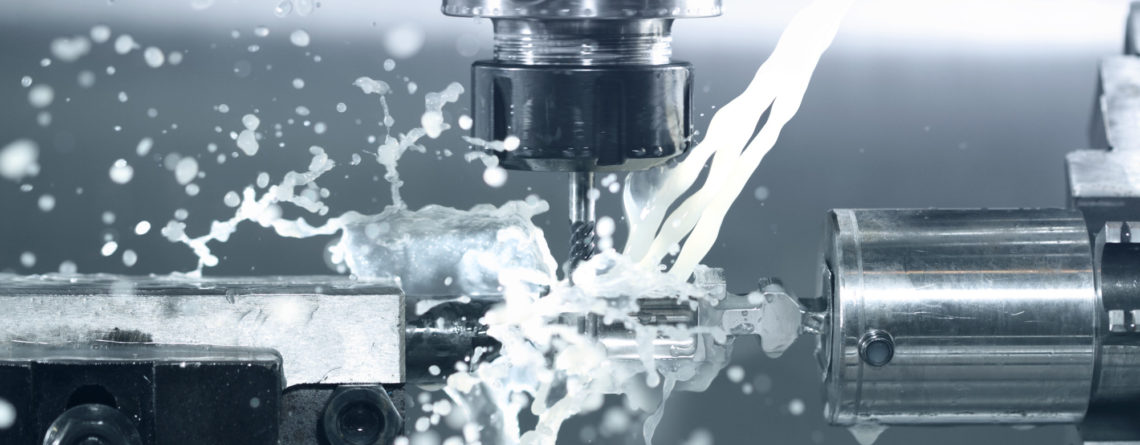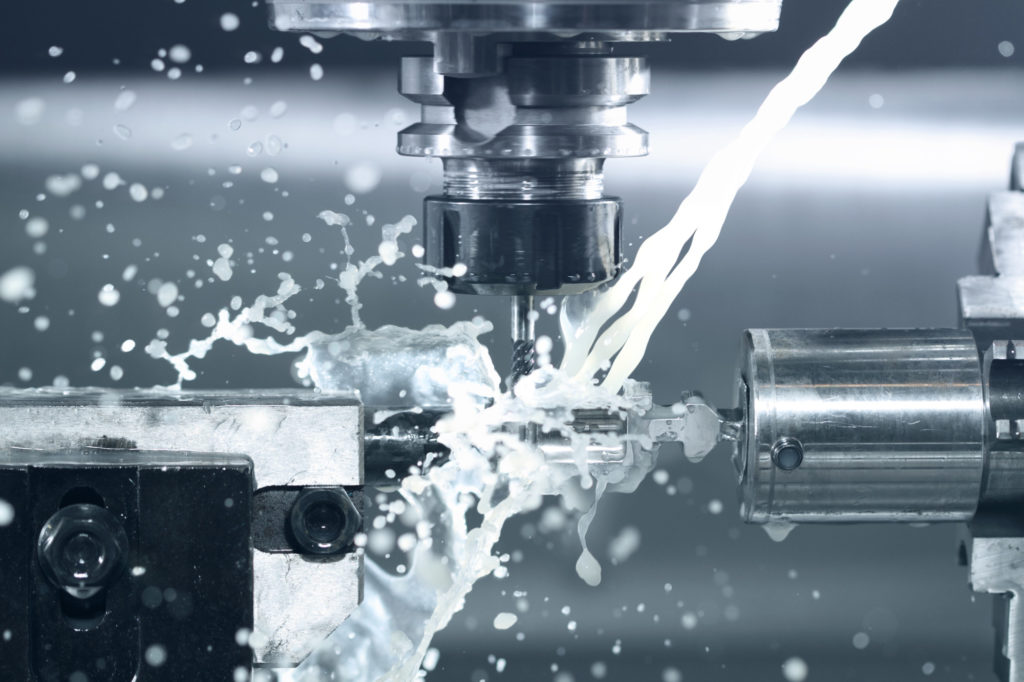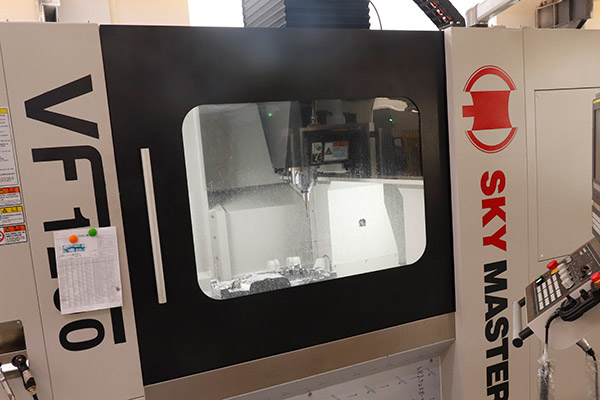What Is a CNC Machine? An Overview of CNC Machining
Did you know the CNC machine market will reach over 100.9 billion worldwide by 2025?
Many industries have incorporated CNC machining into their manufacturing process. This is because using CNC machines increases production. It also allows for a wider range of applications versus manually operated machinery.
But what is a CNC machine? This article explains everything you need to know about CNC machining.
What is a CNC Machine?
CNC stands for “computer numerical control.” These machines represent a manufacturing process used to control a wide range of complex tasks.
CNC machining is used in many different industries. It’s most prevalent in metal and plastic production.
Basically, CNC machining is a manufacturing process. Computer software is pre-programmed to tell a machine how to move factory tools and machinery.
A CNC machine allows for three-dimensional cutting tasks to be accomplished with a single set of prompts. This means that it requires very little input from human operators.
Once the programming is put into the machine, a CNC machine will operate on its own. The speed and position of machinery and involved tools are run through software. CNC machines operate like robots.
CNC Machines vs NCM Machines
NCM stands for a “numerical control machine.” With this type of programming, programs are input through computer punch cards. With CNC machining, programs will be fed into the computers through small keyboards.
An NCM machine can only carry out the current tasks set through punch cards. CNC machines keep their programming inside the computer. Instead of simply inputting a card, the programming for CNC machines is done by programs.
With retained computer memory and human programmers, the computational capacity is greater. CNC programming is much more expansive. You can add newer programs to pre-existing programs by revising the code.
Open Loop Machines Vs Closed Loop Machines
Most CNC machines are closed loop. This is because a closed-loop machine reduces the risk of error. It also rectifies most irregularities.
Some are open looped. This means the controls run in a single line from the control to the motor. With open-looped machines, the one-way dictation allows for irregularities to occur.
How does CNC Programming Work?
CNC machining relies heavily on programming. A human programmer must input the right codes and ensure they work properly. Without the codes, there is no CNC machining.
The language behind CNC machining is also known as G-Code. Most manufacturing machines have code to dictate one or two functions. G-Code is significantly more complex than this.
G-Code will control many varying behaviors in CNC machines. These include speed, feed rate, and coordination.
Once G-Code is written and fed into the machine, there is almost no need for human operators. The code does most (if not all) of the work for them.
Steps to Programming CNC Machines
The basic process of programming a CNC machine is simple. Learning and understanding the code to develop programs is the most difficult part. The steps to programming CNC machines are briefly explained below.
Step 1: A two- or three-dimensional computer-aided drawing is conceived. This drawing will be of the desired end product.
Step 2: The computer-aided drawing is translated into computer code. The translation process is done so that the CNC system can read and execute the desired functions.
Step 3: The machine operator will give the new code a trial run. This will ensure there are no mistakes present in the coding.
Step 4: If the machine programming works without error, the process is done. If there are any mistakes present in the G-Code, the operator will work to fix them. Once they are fixed, they will re-test the machine.
Once the CNC system is activated, the desired cuts will be programmed into the software. It will tell the corresponding tools and machinery what to do.
As mentioned above, this process makes CNC machines like robots. The machines will be carried out in three-dimension as specified.
Understanding Errors in CNC Machining
Although CNC machining is amazing, it isn’t perfect. One of the biggest issues is the computer assumption of perfection.
The code generator located inside the numerical system often assumes that mechanisms are flawless. It doesn’t properly register the possibility of errors.
Although the possibility of errors is always present, certain situations make it more likely. Error mostly increases when a machine is coded to cut in more than one direction at a single time.
CNC Machine Applications
They developed CNC machines out of the technology used for numerical control machines. The earliest use of the numerical control technology dates back to the 1940s.
In the 1940s, motors were used to control the movement of tools. This technology birthed mechanisms that could be controlled by analog computers.
The modern age gave birth to digital computer technology. This was applied to the pre-existing NCM technologies to create CNC machining.
The increased abilities of CNC machines have made the work of many industries simpler. Due to greater possibilities, CNC machining is now used across the manufacturing industry.
CNC machines have been designed to work with a wide range of materials. This includes metal, glass, plastic, wood, foam, and composites. We have applied them to manufacture everything from clothing to aerospace parts.
Types of CNC Machines
There are several unique types of CNC machines. The most basic functioning is the same in all these machines. Its what makes them computer numerical control systems.
The way each machine functions past that is different. How a CNC machine works will be based on what the machine is expected to do. Below are examples of some of the most common CNC machines.
CNC Mills
These can be run by programs made prompts that use both numbers and letters. The programming guides the different pieces of the machine across varying distances.
The most basic mills operate on a three-axis system. Newer models are more complex. They can operate up to a six-axis system.
Lathes
A lath cuts pieces in a circular direction. This process is done with indexed tools. They carry all cuts out with incredible precision and high velocity.
Lathe CNC machines are used to produce designs too complex for manually-ran machines. Although they create complex designs, lathes are typically not complex machines themselves. A two-axis system is most common.
Plasma Cutters
We use plasma cutting CNC machines with metal materials most often. A lot of speed and heat are necessary when making precision cuts in metal. To help achieve this, compressed-air gas is combined with electrical arches.
Wire Electric Discharge Machines
Also known as wire EDMs. These machines use electrical sparks to mold pieces into specific shapes.
Spark erosion is used to remove portions from naturally electronically conductive materials.
Sinker Electric Discharge Machines
Also known as sinker EDMs. These operate like wire EDMs. The difference is in the way electricity is conducted to remove pieces.
With a sinker EDM, work materials are soaked in a dielectric fluid to conduct electricity. This is how pieces are molded into specific shapes.
Water Jet Cutters
These machines are used to cut hard materials with high pressured water. We often use water jet cutter CNC machines with granite and metal.
We sometimes mix sand or another abrasive material into the water. This allows for more cutting and shaping power without adding heat.
CNC Drilling Machines
These use multi-point drill bits to create circular holes in the workpiece. We usually feed the drill bits perpendicular to the workpiece’s surface to create vertical holes. We can also program the process to create angular holes.
Frequently Asked Questions About CNC Machines
At first, understanding CNC machines can seem impossible. It is a complex process. Continued research will help everyone get a better understanding.
When figuring out the intricacies of CNC machines, many people have the same questions. We’ve compiled some of the most frequently asked questions about CNC machines below.
Is there an alternative to G-Code?
Yes. Many CNC machines can be programmed using specially developed programming. This programming is developed or edited by individual companies to better suit their processes.
Is it difficult to set up a CNC Machine?
This depends on the exact machine. A trained CNC machine operator should have low-to-moderate difficulty with the initial setup of a machine. The more complex a machine is, the harder it is to set up.
What if the company doesn’t have its own CNC processing equipment? Does this have to be purchased to use CNC machining?
If a company doesn’t have its own CNC processing equipment, they can outsource the task to a specialized company. Most companies prefer to buy and maintain their own equipment, but it isn’t mandatory.
Are CNC machines and 3-D printers the same thing?
No. The processes may seem similar because both use computer designs to create three-dimensional products. They are very different processes, however.
Is CNC or 3-D printing better?
This isn’t a simple yes or no. It depends on what is being created. It also depends on how comfortable business owners and machine operators are with both processes.
Can you use your own computer to program and operate CNC machines? Or does a special computer have to be purchased?
Technically, you could use your own computer if it had the right capabilities. Most machines are sold with correlating computers. It’s highly recommended you use those instead, but the choice is up to the individual.
Do I have to be a coder to write CNC machine programming?
It’s highly suggested that you familiarize yourself with basic coding before attempting to program CNC machinery. Technically, you don’t need to be a coder. If you can work with a computer coder, however, the process will be significantly more efficient and simple.
Is the G-Code created by computer-aided design programs done? Or does it require manual work after the design is created?
This depends. It is highly likely the G-Code created by your computer-aided design program will require some fine-tuning before it is entirely accurate. This is why you need to do trial runs before operating your system.
What if I have CNC machines from different companies or for different purposes? Do I really need to read each instruction manual or is the process the same for each?
You always want to read the instructional manual from front to back. This is for each machine, even if it is the same type of machine from a different company. Each one can be different in small ways that make big differences in the overall process.
Can CNC machines be used without rests for long periods?
This depends on the exact machine. Most CNC machines will be programmed to run for a while. Then they will shut off while a manual operation like moving the pieces is accomplished.
Do I need to manually clean my CNC machine?
Yes. CNC machines do not have automatic cleaning technologies. They will need to be cleaned according to your manufacturer’s instructions.
If I buy a CNC machine and have issues, who do I call?
The first place you should call if you are having issues is your CNC machine’s manufacturer. There should be a number either in the instructional manual or on your machine somewhere. If you can’t find the phone number, you can search for it online.
Learn More
To learn more about CNC machines, check out this quality resource. It can further answer your question, “What is a CNC machine?” If you still have questions after this, please feel free to reach out with any questions you might still have.



